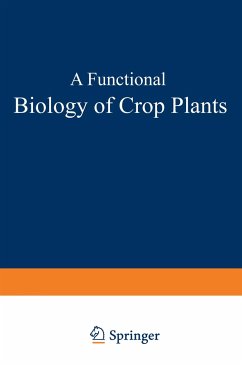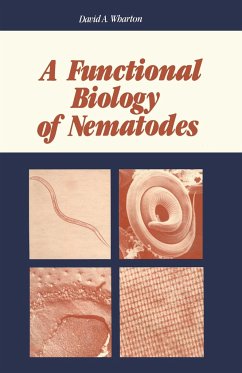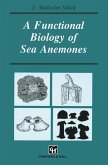1. Functional Biology and Plant Strategies.- A. Functional Biology.- B. The Requirements on Plants in Their Growth and Function.- C. The Abiotic Environment: Plant Autecology.- (i) Resources.- (ii)Resource Challenges Faced by Plants.- D. Adaptive Strategies.- (i) Utility of the Strategic View.- (ii) Explaining Adaptations, in Kind and in Magnitude, Primarily in Wild Growth.- (iii) Indicating Routes to Crop Improvement.- (iv) Examples of Objective Functions and Adaptations.- E. Four Principles of Adaptive Strategies.- F. The Calculation of Energetic Costs and Benefits.- (i) Three Types of Costs.- (ii) How Energy Costs Affect Growth and Yield.- (iii) Optimizing the Energetics of a Plant.- G. Toward a Quantification of Risk and Risk Management.- H. When and How Fast to Deploy Strategies.- I. Effectiveness and Limitations of Strategic Adaptations.- (i) Internal and External Limitations.- (ii) Limitations to Adaptive Strategies.- J. Additional Strategic Considerations for the Biotic Environment.- 2. Mineral Nutrition.- A. Essential Elements in the Ecosystem and Their Availability to Plants.- (i) Energetic Costs of Acquiring Nutrients.- (ii) Soil Processes.- B. Four Types of Challenges.- (i) Low Nutrient Availability in Soil.- (ii) Physiological Limitations on Internal Transport and Use.- (iii) Severe Imbalances Among Nutrients.- (iv) Toxicity of Nonnutrients.- C. Consequences of Nutritional Challenges.- (i) General and Ecological Challenges.- (ii) Agricultural Consequences.- D. Adaptive Responses, Their Costs and Benefits.- (i) Autecological Responses.- (ii) Responses Within Plant Communities.- 3. Photosynthesis.- A. CO2, Photons, and Their Availability to the Plant.- (i) The Basic Photosynthetic Reaction and Its Constraints.- (ii) CO2 and Water Exchange.- (iii) CO2 and Photon Transport in Whole Canopies.- (iv) Measures of Photosynthesis.- (v) Net Determinants of Photosynthesis.- B. Energy and Soil Resource Uses: Costs and Benefits.- (i) Costs and Benefits in Photosynthesis Alone.- (ii) Optimizing Leaf Energetics: An Example.- (iii) Use of Water and Mineral Nutrients.- (iv) Miscellaneous Costs and Benefits.- C. Challenges.- (i) Low or Erratic Availability of Resources.- (ii) Excesses and Imbalances.- (iii) Transport Limitations.- (iv) Nonresource Challenges.- D. Consequences of Challenges to Photosynthesis.- (i) Ecological Consequences.- (ii) Agricultural Consequences.- E. Adaptive Responses, Their Costs and Benefits.- (i) Responses to Low or Erratic Resource Availability.- (ii) Responses to Excesses and Imbalances.- (iii) Responses to Transport Limitations.- (iv) Responses to Nonresource Challenges.- 4. Water Relations.- A. Introduction.- (i) Water in Plant Structure and Function.- (ii) Water Potential and Terminology.- (iii) Water Transport in Soil.- (iv) Water Uptake by Roots.- (v) Water Transport from Roots to Leaves.- (vi) Water Consumption in Photosynthesis.- (vii) Cost-Benefit Analyses in Water Use.- B. Challenges.- (i) Low or Erratic Availability of Water.- (ii) Transport Limitations.- (iii) Excess Water: Flooding.- (iv) Salinity, a Nonresource Hazard.- C. Consequences of Challenges.- (i) Ecological Consequences.- (ii) Agricultural Consequences.- D. Adaptive Strategies, Their Costs and Benefits.- (i) Strategies for Low Water Availability.- (ii) Strategies of Salt Tolerance.- (iii) Strategies of Flood Tolerance.- (iv) Responses Within Ecosystems.- 5. Integrative Processes.- A. New Features in Long-Term Coordination of All Resource Uses.- B. Reproduction.- (i) The Vegetative-to-Reproductive Switch.- (ii) Seeds: Many and Small, or Few and Large?.- (iii) Senescence and Resource Scavenging.- (iv) Flower and Fruit Abortion.- (v) Pollination.- C. Germination.- D. Morphogenesis, Especially Photomorphogenesis.- E. Control of Biotic Interactions.- (i) Pests and Diseases.- (ii) Symbionts.- (iii) Conspecifics and Their Gene Pool.- References.- Symbols.








